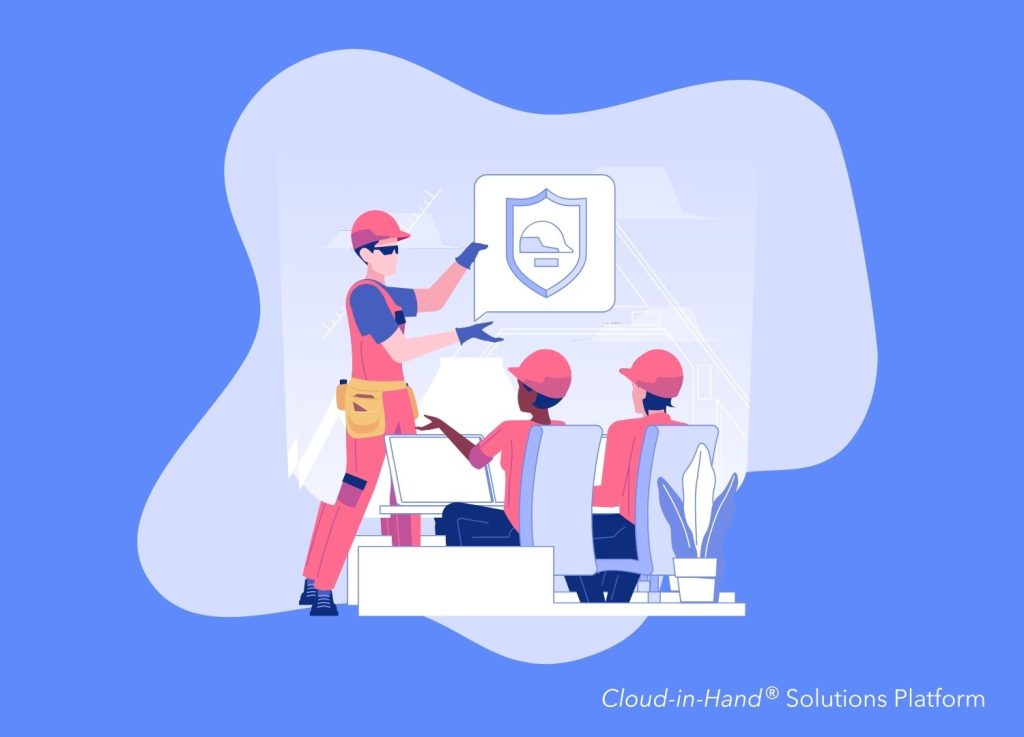
Avoid OSHA Fines: Everything You Should Know

Whether your workplace is a construction site filled with daily hazards or a quiet office with nothing more than desks and swivel chairs, having a solid emergency plan is essential. An unplanned emergency disrupts your entire operation. Don’t also put employees at risk, and possibly have costly damages that require time and resources to fix.
Without proper safety protocols, your business could face serious consequences, including fines from The Occupational Safety and Health Administration (OSHA).
So ask yourself: Would our company pass an OSHA inspection today?
If the answer isn’t a confident yes, it’s time to learn how to improve your current emergency evacuation plan to avoid OSHA fines before they happen.
In this blog, we’ll cover everything you should know to avoid OSHA fines and explore how modern technology can enhance your emergency preparedness.
Stratus-io: Emergency Headcount
A Quick Summary of OSHA
To many companies, OSHA might feel like just another administration making them walk on eggshells. But that’s not the case. OSHA was created to ensure safe and healthy working conditions for employees across all industries. Understanding what OSHA is and why it matters helps you stay compliant and protects your workforce.
Here’s a quick breakdown of what OSHA is and why it matters:
- When it was established: OSHA was created in 1970 as part of the Occupational Safety and Health Act signed into law by President Nixon.
- What caused its creation: Prior to OSHA, workplace injuries and fatalities were rising at alarming rates, with little federal oversight or consistent safety standards.
- Why it was established: To reduce workplace hazards, prevent injuries and deaths, and promote safe and healthy work environments nationwide.
- Who it protects: Millions of workers in most private industries, as well as some public sector employees.
- Its role today: OSHA sets and enforces safety standards, conducts inspections, issues fines for violations, and offers training and resources to employers and workers.
Who Should Worry About OSHA?
If you’re an employer in the private sector, OSHA likely applies to your company.
OSHA regulations cover most private businesses in all 50 states, the District of Columbia, Puerto Rico, and other U.S. territories. Whether you run a factory or a corporate office, you’re expected to provide a safe working environment that meets federal safety standards. That includes everything from physical hazards to emergency preparedness.
But what about government workers? That’s where things get a little more nuanced.
Federal OSHA doesn’t cover state and local government employees, unless they work in a state with its own OSHA-approved safety program. In those states, public employees are protected under local plans. And when it comes to federal employees, like those working for federal agencies, they fall under a different section of the law. OSHA doesn’t issue fines to federal agencies, but it does monitor their safety practices and investigates serious complaints.
In short: unless you’re self-employed or working in a very specific public role, you’re probably on OSHA’s radar.
Avoid OSHA Fines Today!
Whether you manage a construction site or a manufacturing plant, our software helps you enhance emergency preparedness.

What triggers an OSHA Inspection?
You’ve probably been keeping up with OSHA standards and feel confident that everything is in order. Then suddenly, without warning, an OSHA inspector arrived for a surprise visit.
You start wondering, Why now? What triggered this inspection? What did we miss?
Even the most prepared companies can be caught off guard ending up with a fine. Here are a few common reasons OSHA might unexpectedly show up at your workplace:
- A recent workplace injury or fatality
- An anonymous complaint filed by a current or former employee
- A tip from another federal, state, or local agency suspecting unsafe conditions
- Routine or programmed inspections based on your industry’s risk level
- High injury rates in your sector
- Follow-up visits to check on previously cited violations
- Random selection, with no specific trigger at all
So even if your company has never been inspected and you’re convinced it never will be, it’s always better to be safe than sorry. The last thing you want is to be caught off guard, trying to explain gaps in your safety protocols or putting on a facade that everything is under control.
At the end of the day, about creating a workplace where your team feels protected and prepared. Not about avoiding OSHA fines.
Common OSHA Violations Leading to Fines
When it comes to OSHA inspections, even small oversights may lead to major penalties. As of January 15, 2025, the U.S. Department of Labor announced updated OSHA civil penalty amounts based on inflation. That means fines have gone up, especially for repeat violations. With already steep penalties now rising even higher, it’s more important than ever to stay informed about common compliance issues so your workplace avoids OSHA fines.
Here are five of the most common violations that trigger fines:
- Inadequate Emergency Exit Routes
OSHA requires workplaces to have marked unobstructed exits for safe evacuation. - Failure to Train Employees
Employees must be trained on emergency procedures, how to use equipment such as fire extinguishers, and how to report hazards. - Missing or Inadequate Safety Signage
From hazardous material warnings to emergency exit signs, OSHA requires clear and visible signage. A single missing sign might not seem like a big deal, but may lead to a citation and a fine in the future. - Poor Recordkeeping
OSHA requires certain businesses to maintain accurate and complete records of injuries and illnesses. Failing to submit these reports on time may result in fines, even if no actual accident has occurred.
How Technology Helps You Avoid OSHA Fines
The global emergency management software market was valued at $370 million in 2024 and is projected to reach $970 million by 2033. That growth reflects how much companies value technology’s role in protecting employees and staying compliant. In 2025, having advanced software as part of your emergency plan is no longer optional. Tools like emergency headcount can track employee locations in real time and complete evacuations in under 60 seconds These tools also automatically log data for compliance reports and streamline communication during high-stress moments. Don’t be the company scrambling with clipboards while everyone else has moved on. Invest in smarter safety now.
Avoid OSHA Fines Before They Happen
Now that you know the importance of OSHA and why a business must abide by its regulations, how do you actually avoid OSHA fines? Here’s a list to help you pass your next inspection with confidence:
1. Create a Comprehensive Emergency Plan
Your plan should outline evacuation procedures, emergency contacts, alarm systems, and assigned roles. Make sure it’s written, accessible, and regularly updated.
2. Keep ALL Exit Routes Clear and Marked
Don’t wait for an inspector to point out that a chair or box is blocking the exit. Keep pathways open and signage visible at all times.
3. Train Your Employees
Don’t assume your team knows what to do in an emergency. Hold regular safety trainings, run drills, and document everything.
4. Inspect and Maintain Emergency Equipment
Fire extinguishers, first-aid kits, alarms, and lighting need to be checked and serviced regularly. Neglecting this can lead to citations.
5. Post OSHA Notices in a Visible Area
OSHA requires that the “Job Safety and Health: It’s the Law” poster be clearly displayed where all employees can see it. Yes, even in the break room.
6. Report Injuries and Incidents On Time
Fatalities must be reported within 8 hours, and serious injuries like hospitalizations or amputations within 24. Late reporting = instant red flag.
7. Stay Up to Date on OSHA Regulations
Standards change. What was compliant last year might not be this year. Stay informed so you’re not caught off guard.
8. Use Technology to Streamline Safety Protocols
Emergency headcount software and safety management tools help you respond faster, log data, and stay inspection-ready.
Staying One Step Ahead of OSHA
Don’t fall behind while other companies move forward with smarter safety strategies. Keeping your team prepared and staying compliant means being proactive before an emergency happens.
One of the easiest ways to stay one step ahead of OSHA is by using robust tools that actually work when it matters most. Stratus-io Emergency Headcount helps teams respond quickly with SMS alerts, generates accurate records for compliance, and so much more!
Watch the video below to see how Stratus-io helps you stay organized, calm, and compliant during high-stress moments.

Cloud-In-Hand® Solution Team
This blog reflects the expertise of the Cloud-In-Hand® Solution Team with over 100 years of experience in hardware, software, and firmware development. Since founding Solutions Consulting in 1992, now known as Serialio LTD, the Solution Team has designed and developed many innovative solutions. Cloud-In-Hand® Stratus-io Time and Attendance, helps organizations like Apple, Google, Toshiba, LinkedIn, Salesforce, and many more, streamlining their operations.



